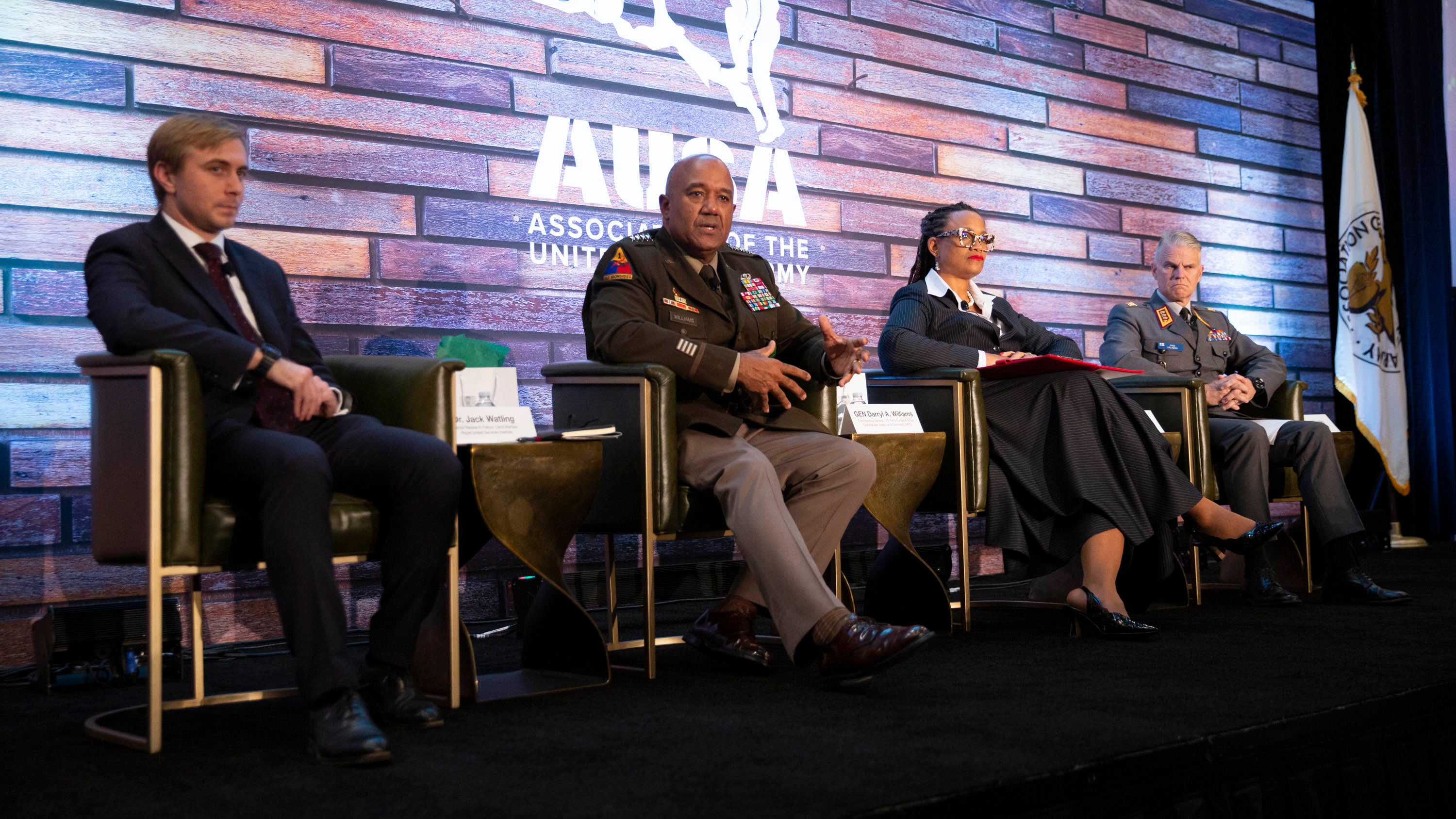Exercises in Europe to Focus on Real-World Adversaries
Exercises in Europe to Focus on Real-World Adversaries

As Russia’s war on Ukraine wears on into its second year, the leader of U.S. Army Europe and Africa said that preparing for future fights will mean leaning into real-world battle scenarios.
Speaking Oct. 10 at the Association of the U.S. Army’s 2023 Annual Meeting and Exposition in Washington, D.C., Gen. Darryl Williams said that, following NATO's July summit emphasizing deterrence and allied support of Ukraine, the Army would stress becoming more prepared to fight the real threat in the region.
This also means bringing a broader range of allied nations into joint exercises, Williams said, and engaging in scenarios they’re likely to face based on geography and context.
“Our Baltic brothers and sisters will draw first contact, possibly, so what does their stance look like, what forces do we have there?” Williams said. “How are we empowering them? How are they linked to posse up with Finland, and Sweden, hopefully, in the future?”
“We will fight the people who we’re going to fight now,” Williams said of the exercises. While he did not name Russia, he said that exercises featuring notional enemies and battle scenarios, such as the one featured in NATO command post exercise Steadfast Jupiter, taking place now in Brunssum, Netherlands, would take a back seat to more realistic conflict. Operation Austere Challenge, a recurring U.S. European Command exercise to be held in March, would feature this new approach, he said.
“Our exercise construct—it’s strong now, but it’ll be even stronger because we’re going to fight the enemy,” Williams said. “We're going to practice that way with all of our alliance.”
As the Army continues to evaluate ways to apply hard-earned war insights learned from Ukraine, Williams stressed the importance of reaction speed on the battlefield, particularly in artillery maneuver. The Ukrainians, he said, were working “admirably” to meet the challenge amid complex obstacles.
“The synchronization of offensive operations—the idea that you fire and maneuver, not fire, then maneuver, is something that we’re working very closely with,” Williams said.
Lt. Gen. Pasi Välimäki, commander of the Finnish Army who appeared on the panel with Williams, said the war also emphasized the importance and challenges associated with battlefield sustainment and building up a mature and capable reserve force to carry on the fight. He applauded the work of the U.S. Army’s 21st Theater Sustainment Command in “pushing through materiel in huge quantities” to support the alliance.
Williams said the Army has more to internalize about the challenges of increasingly long logistics challenges and the prospect of having supply lines contested.
“The center of gravity of NATO has moved farther east, right through Finland, down through the Eastern Bloc,” Williams said. “It’s going to be contested logistics. We’re going to fight our way into this, probably. So, how do we protect those long lines of communication to get those enablers to support the warfighter on the very tactical edge of the fight?”
— Hope Hodge Seck for AUSA

